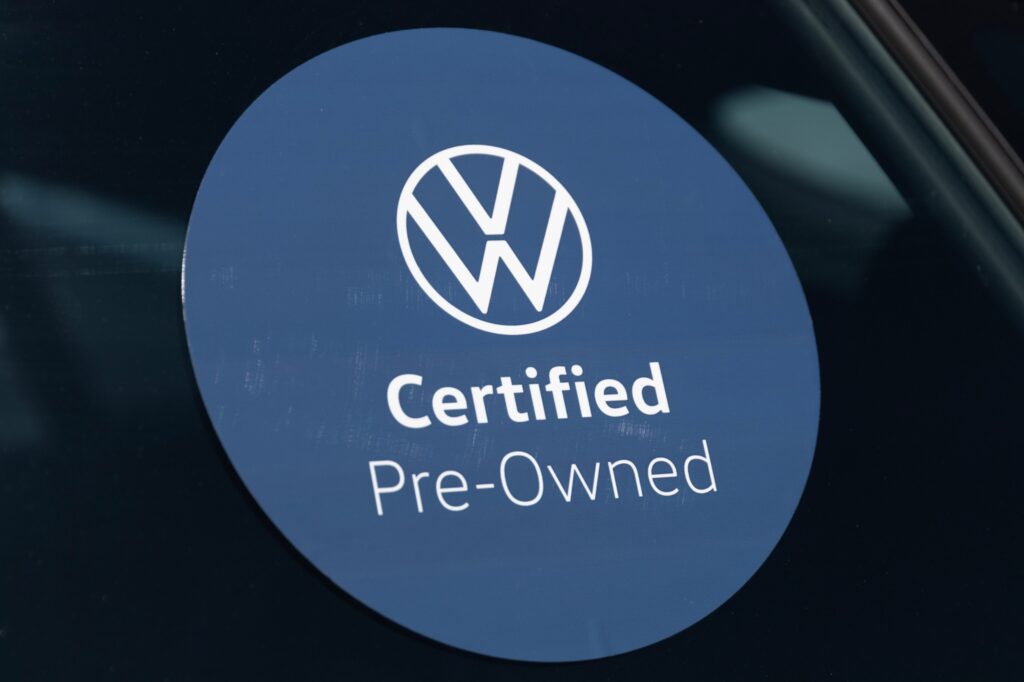The used car market is a big one. Among the many classifications you’ll find is the certified pre-owned category, which we’ll talk about in this article.
What Does a Certified Pre-Owned Car Mean?
When a vehicle is certified pre-owned (CPO), it means that it’s been backed by a dealer or manufacturer after going through inspection and the appropriate parts replacement process.
Dealers and manufacturers have their own CPO programs and might have a different set of criteria when it comes to accepting used cars, including mileage and overall condition.

In most cases, vehicles that are accepted into CPO programs are those that have only been used for a few years and have less than 60,000 miles on their odometer.
Most CPO vehicles are in great condition when they arrive at the dealership due to the inspection process they go through, and they’re quite popular with drivers looking to buy a used car.
A lot of CPO vehicles are trade-ins or lease returns, which makes a lot of sense since these vehicles have mileage restrictions. Also, such vehicles are expected to be returned in good condition to avoid penalties.
Generally, CPO vehicles cost 1.8% more than non-certified ones, so you’ll be shelling out more money than you’re used to if you want a used vehicle that’s CPO.
While this might be the case, CPO cars have a 15% reduction in terms of issues, so they’re more reliable than non-certified vehicles.
Certified Pre-Owned vs. Used Car: What’s the Difference?
The only thing that differentiates a CPO car from any other used vehicle is the certification from the manufacturer or dealer.
Generally, all CPO cars are used. It’s just that CPO vehicles have been inspected before they’re sold in the used car market and they’ve met a set of criteria that makes them more appealing to car buyers.
The Pre-Owned Program
The certification criteria greatly varies, depending on the program of the dealer or manufacturer. However, most programs generally follow a standard procedure during inspection.
Regardless of the certification program, the first step is always to conduct a thorough inspection of the vehicle.
A background check will help the manufacturer or dealer determine whether or not there are major problems that can render the vehicle ineligible for certification. The inspection will also include checking the mileage and age of the vehicle.
After the vehicle has been examined, the mechanic can now proceed to the reconditioning phase. This process involves refurbishing the vehicle’s exterior and performing the necessary repairs under the hood as well as the tires.
Advantages of Buying a CPO Vehicle
CPO vehicles are a bit more expensive than regular used cars, but that’s only because they come with several advantages over their counterparts.
Peace of Mind
There’s no need to second-guess the quality of a CPO vehicle because it’s already been inspected by a trusted mechanic.
In most cases, you’ll get an inspection checklist from the manufacturer or dealer when buying a CPO vehicle, so you can go through everything that was done to it prior to being sold.
Having a copy of maintenance and repair work can guarantee that you won’t be heading to the nearest auto repair shop anytime soon.
Extended Warranty
A lot of CPO vehicles still have some of their original factory warranty, so they’ll still have some sort of protection should certain issues arise. In most cases, the factory bumper-to-bumper warranty coverage is still included for CPO vehicles.
Some manufacturers sell CPO vehicles with a modified or extended warranty coverage, so it’s best to do some recon before buying one.
Perks
A lot of CPO vehicles come with their own set of perks, such as roadside assistance, reimbursement, and the availability of a loaner vehicle in case repairs are needed.
Flexible Financing Options
Buying a regular used car might require you to pay cash upfront, which might not be feasible for other drivers.
The good news is that if you’re buying a CPO vehicle, manufacturers and dealers might offer you other financing and leasing options that are more convenient and suitable for you.
Tips for Buying a Pre-Owned Car
When buying a pre-owned car, it’s important to consider the same factors you normally would when shopping for any used car.
Research is arguably the most important step when buying a pre-owned car. It’s always a good idea to make sure that you’re going after a vehicle that meets your needs.
At the same time, it’s also advisable to dig deep in terms of the vehicle’s condition and underlying issues. You can also check if the vehicle you’re looking into has a comprehensive history report.
Budget is another factor to consider when buying a pre-owned vehicle. You can expect CPO vehicles to be pricier than regular used cars.
There’s always a way to cut down on expenses, especially when it comes to used vehicles. One way to do that is to simply watch the calendar.
In most cases, the final days of the month, quarter, or year give buyers more negotiating power because there’s a possibility that sales agents haven’t hit their targets yet. Meanwhile, agents who have already reached their goals won’t have the same urgency.
The Verdict: Is Buying a Certified Pre-Owned Car Worth It?
Buying a certified pre-owned car is certainly worth it in the long run. With a CPO vehicle, you can rest assured that it’s been carefully inspected by professional mechanics, so there’s no need to fret about potential issues in the near future.
Also, you get to enjoy a lot of perks that you won’t normally get from regular used cars.
Any information provided on this Website is for informational purposes only and is not intended to replace consultation with a professional mechanic. The accuracy and timeliness of the information may change from the time of publication.




















